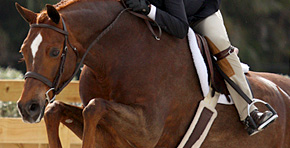Aug. 1, 2009
By Kim Ablon Whitney
I recently was asked to be one of the six judges for the Washington Equitation Classic at the Washington International Horse Show. In addition to being honored to judge such a prestigious class at one of our country’s top indoor horse shows, I’m especially excited because of the format of the judging for the class. The six judges sit in pairs, with each “team” producing a numerical score for each round.
I’m also looking forward to judging the Rhode Island Medal Finals, another Final where I’ll be working as a team with another judge.
When two judges work together, both study each round and then sometimes during, but more often afterwards, discuss the merits and drawbacks of the performance.
The expression “two heads are better than one” is never more relevant than in this scenario. It’s ideal to talk over the nuances and to dissect any issues that arise. Usually the judges agree and easily decide upon a score. If one judge throws out an 85 and the other judge suggests an 81, we typically settle on an 83.
If there was an issue that arose on course—a quick stutter step off the ground that one judge saw at one jump, for example—there is another pair of eyes who can either say, “yes, I saw that too,” or “nope, didn’t happen.”
Only very rarely do judges who don’t see eye-to-eye sit together. Most judges are not that far apart in their opinions and show managers also are smart in choosing their teams of judges. Every judge has a reputation for his/her style, temperament, and likes/dislikes and good show managers don’t put “oil and water” on the same judging team!
So… shouldn’t all classes have two judges, you might ask? Well, no. While it’s wonderful to judge with another judge for the big classes or big shows*, for smaller classes it’s often nicer to “just be in your own head.”
When there is an extra judge around for a ring of smaller classes what works well is for the two judges to alternate the classes in a division. For example, one judge takes the first children’s hunter class and the other judge the second children’s hunter class. This gives both judges a break and keeps the judging fresh. The fewer classes you have to judge, the sharper you are as a judge.
For A-rated sections at AA shows, judges can also choose whether to do the classes as a team, or alternate. If given a preference, I typically prefer doing it together, and if I were competing that’s what I’d want the judges to do too.
*In A-rated sections of AA competitions, the rule is that a minimum of two judges must officiate. Those two judges can judge the classes together or separately. One judge, however, can not judge more than 60\% of the classes in a division.
Posted in
Guest Bloggers

 Favorites
Favorites








